The MC Pro phono preamp by Michael Fidler (Classic Audio Ltd) promises a whisper-quiet signal-to-noise ratio, alongside hyper-accurate RIAA performance. Having been suitably impressed with Michael’s Spartan 15 moving magnet phono stage, can his first venture into the delicate world of moving coil amplification knock it out of the park once again?
As is the case with all Michael Fidler designs, the MC Pro utilizes all-through-hole circuitry; you won’t find any cheap surface mount components here, and each unit is hand-soldered right here in the UK by Michael himself.
Just like the Spartan 15, the PCB board is exceptionally well crafted; these circuits really are impeccable!
Another standout feature of Classic Audio products is the decision to use linear power supplies when most of the competition opt for switching power supplies. While cheaper and more power efficient, switching power supplies can be plagued by electrical noise and EMI (electromagnetic interference).
The MC Pro won’t win any beauty contest for its external aesthetic; the chassis is sturdy and well-built, albeit fairly unassuming. One thing I do really like is reassuringly robust front panel switches — too many of these devices have flimsy buttons and dials that don’t feel like they can last the pace!
According to the product info, these toggle switches are rated for 50,000 cycles instead of the usual 10,000 cycles of cheaper push switches.
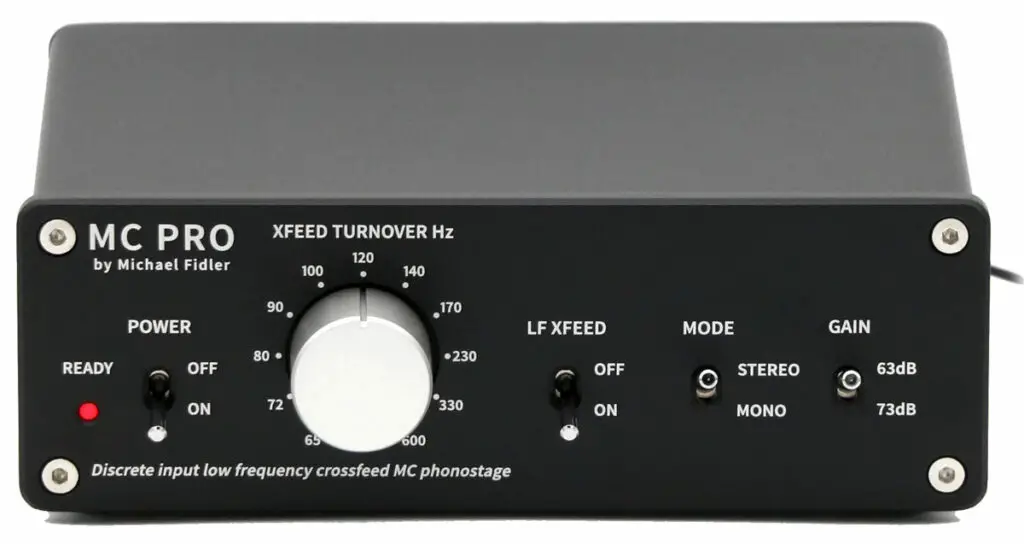
There are three of these toggle switches on the front panel controlling power and gain, alongside some lesser spotted features in the form of a mono switch and a fully-defeatable variable low-frequency crossfeed (LF XFeed). Accompanying the LFX toggle is a smart and sturdy aluminum knob for adjusting the turnover frequency. More on what this does later…
Flip the MC Pro around and you’ll find the usual RCA inputs and outputs, but also balanced XLR outputs.
Giving the option of balanced outputs gives greater flexibility for equipment placement, as you’ll be able to run the output of the MC Pro much longer distances without having to worry about picking up noise in your signal along the way.
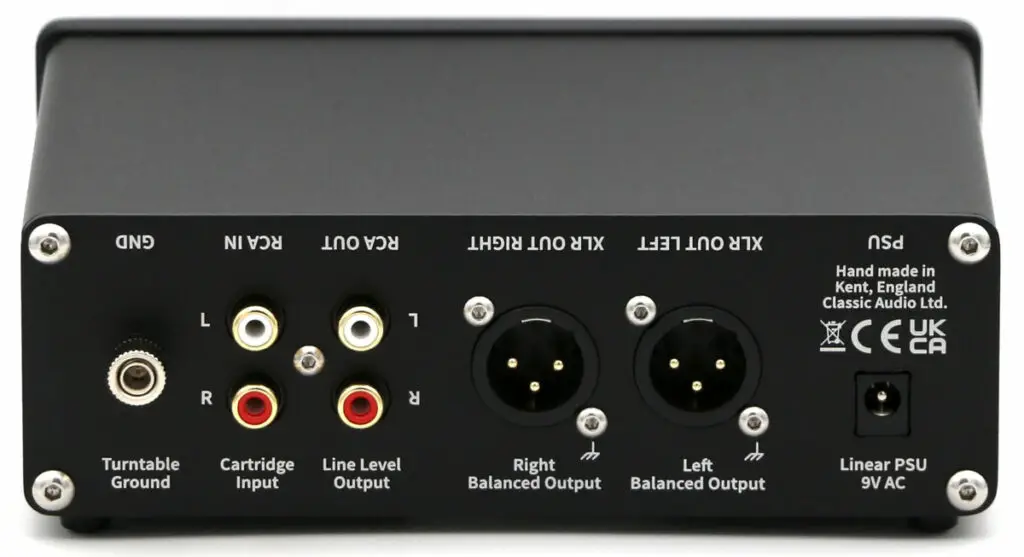
In short, supposing you have a preamp or integrated amplifier with a balanced input, you can keep the phono preamp very close to the turntable and then run a longer distance to the next component in your signal chain.
Why no balanced phono input?
Balanced phono inputs are becoming increasingly popular. Pro-Ject, for example, is one such manufacturer with an increasing line of balanced input phono stages.
So why not just make the MC Pro fully balanced on the way in and out?
Michael goes to great lengths on his YouTube channel explaining why he doesn’t believe balanced phono inputs offer a net benefit; he cites the required additional input amplifier stages and additional noise these add as the main reason.
I can see the logic here, particularly when we’re dealing with signals as low as the output of a phono cartridge. Michael prefers instead to advocate keeping tonearm and phono cables as short as possible to achieve the best of both worlds.
Under the Hood
The MC Pro is a very engineer-led product. Popping the chassis lid reveals an immaculately laid out, hand-wired circuit that can only be described as a work of art.
As the saying goes, they don’t make them like they used to!
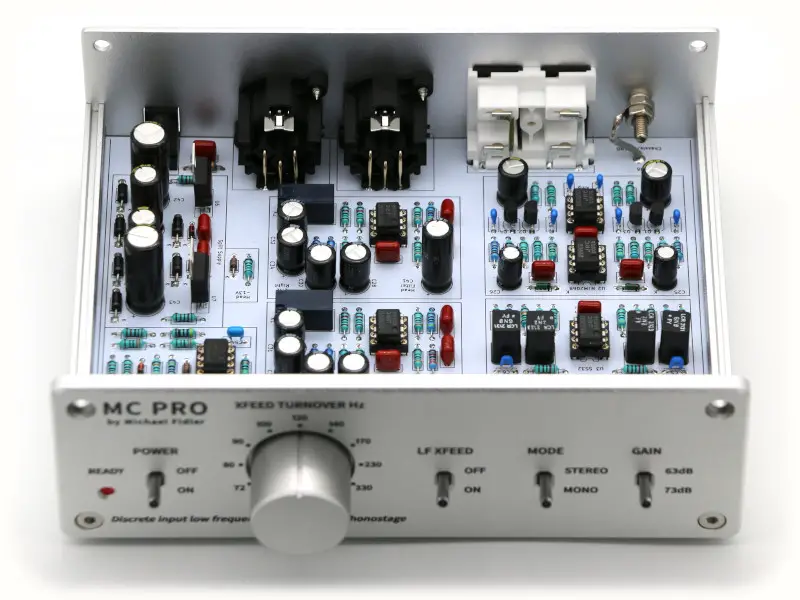
Michael’s approach is refreshingly old-school; opting for the best possible components for each job and then figuring out the cost later means that each product is designed with sound quality first before anything else.
Put it this way: the circuit was designed before the enclosure design, and while this might not deliver the curb appeal of other more marketing-led products, it’s absolutely the right attitude if audio fidelity is the primary goal.
The MC Pro boldly claims to push the practical noise floor below that of even the best moving magnet systems.
Considering the much smaller signal output of MC cartridges, this is a huge statement.
But then again, there is science behind this. Moving coil cartridges can indeed offer a better signal-to-noise ratio than moving magnet designs thanks to their lower coil resistance that generates 25 times less thermal noise voltage.
The catch is this better signal-to-noise ratio assumes the receiving amplifier is quiet enough to boost the signal without nullifying this inherent moving coil design benefit.
To fully bring out a moving coil cartridge’s signal-to-noise ratio, Michael has opted in favour of discrete parallel transistors for the input amplifier instead of IC (integrated circuit) op-amps. The result, he claims, is a better signal-to-noise ratio in the MC PRO than some of the best moving magnet systems.
The benefit to you? Exceptionally revealing “black” backgrounds, along with all the inherent benefits of low-inertia moving coil cartridge designs.
A quick look at the MC Pro specifications reveals a claimed signal-to-noise ratio of 81.5dB between (220Hz to 22kHz).
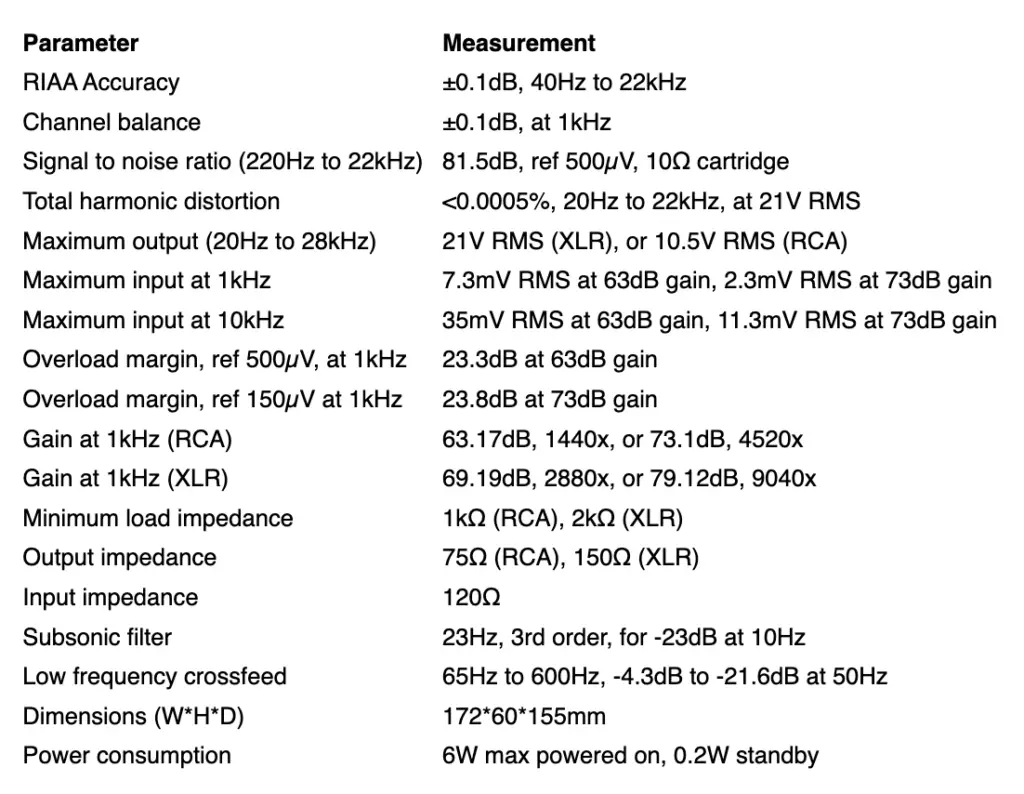
Specifications, however, can be quite unreliable when it comes to realistic listening conditions, so in the absence of any posh equipment to test this figure, I can only go on what I actually hear.
Considering the signal-to-noise ratio is such a flagship claim of the MC Pro, I thought it prudent to at least perform some sort of comparison with similar competing preamps.
To do so, I first used the HiFi News test LP to record a little pink noise for volume reference. This then allowed me to normalize the recording to account for any gain difference and get a reasonable comparison of each preamp’s “self-noise” with a cartridge load attached.
Take a listen to the audio examples included in the video at the top of this article. The result, I think you’ll agree, speaks for itself. The other phono preamps sampled are roughly within the same price bracket! The MC Pro wins, hands down. (Keep in mind, though, both of the comparison phono preamps are combination MM & MC phono stages).
The MC Pro is a dedicated moving coil only preamp. According to Michael’s product details, “By taking the dedicated MC approach simplified above, the MC PRO drops moving magnet compatibility in favour of amplifying the moving coil input almost 10 times more than the combination circuit, so the stronger signal is now far less prone to noise contamination from the next stage.” His website breaks the advantage down further for those who like more detail.
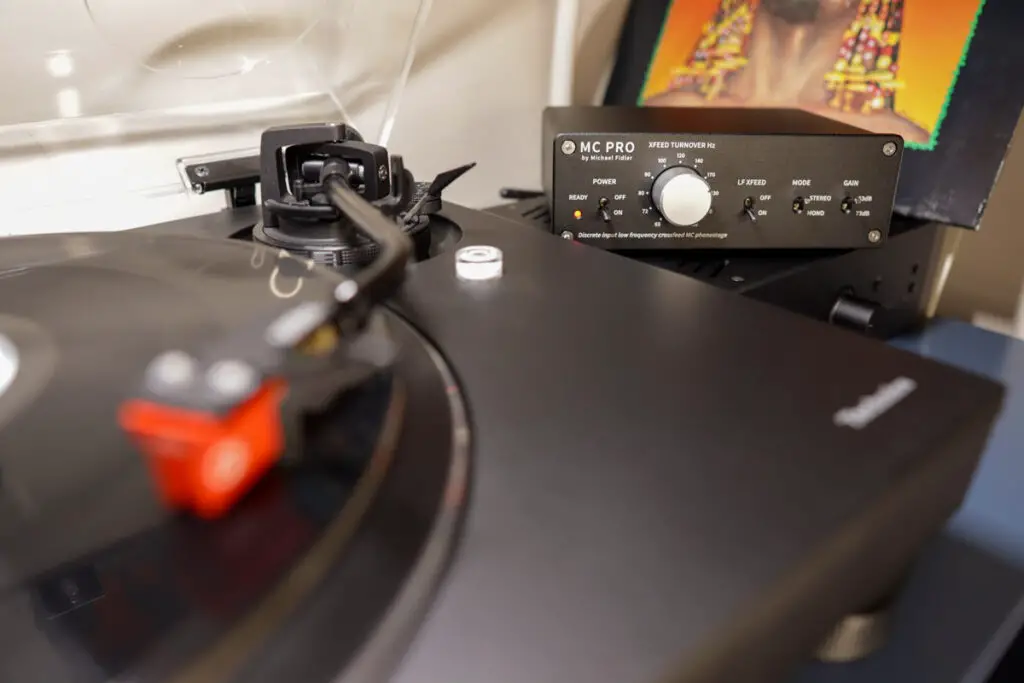
Raise the Roof
Low noise is all well and good, but what about the MC Pro’s ability to handle dynamic swings?
The MC PRO has this covered with its maximum input level of 7.3mV RMS at 63dB gain and 35mV RMS at 63dB gain. Given the nominal input of 0.5mV from my Ortofon Quintet Red cartridge, it’s safe to say the MC Pro can handle basically anything I could throw at it!
If the statistics are to be believed, distortion is essentially negligible at <0.0005%, 20Hz to 22kHz, at 21V RMS.
RIAA Adheaerance
So far, so good, but what is the purpose of a phono preamp if not to perform the task of reversing the RIAA equalization curve?!
Again, the MC Pro boasts some spectacular numbers here.
Similarly to the Spartan 15, we’re shown specifications of ±0.1dB, 40Hz to 22kHz. This is impressive, considering many phono preamps struggle to achieve ±0.5dB.
If all these specifications sound too good to be true, I recommend checking out the audiosciencereview.com measurements, which appear to add serious legitimacy to Michael’s claims.
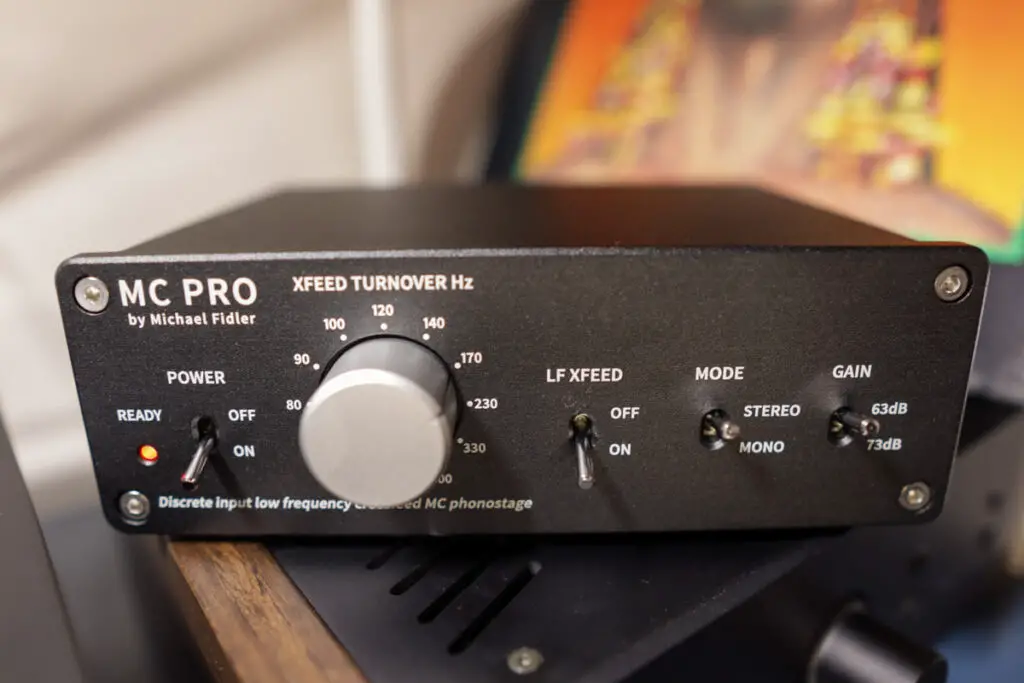
Low-Frequency Crossfeed
Because the RIAA curve boosts low frequencies, a lot of vinyl playback noise exists in the lower frequencies. But what if we could cancel much of this out without disturbing stereo width across the board?
This, my friends, is where the MC Pro Low-Frequency Crossfeed comes in. The theory is that bass frequencies are largely panned to mono when mastering for vinyl, so no useful information is lost by blending to mono below 200Hz or lower.
This is true, to a degree… stereo bass can result in big sweeping movements up and down. Left unchecked, it is possible for the cutting stylus to lift up off of the surface of the lacquer, or cut so deep that it cuts through the lacquer coating and into the metal disc below (ruining the cutting stylus in the process). By test cutting and watching how the cutting lathe reacts during test runs, the engineer can determine how much (if any) correction is needed to control the vertical movement.
All this aside, it’s safe to say that a certain amount of mono bass is required when cutting records, so in many cases, we can achieve a lower noise floor yet again with the Low-Frequency Crossfeed.
To test this theory, I took samples, again from the HiFi news test disc, of an unmodulated groove to see how the MC Pro helped remove unwanted “vinyl roar”. (Watch the video embedded at the beginning of this article to hear the audio samples)
You be the judge: I firmly believe this is a useful function. You’ll notice the reduced noise, particularly on headphones. When applied with actual music, the reduced surface noise helps reveal bass details that might otherwise be lost.
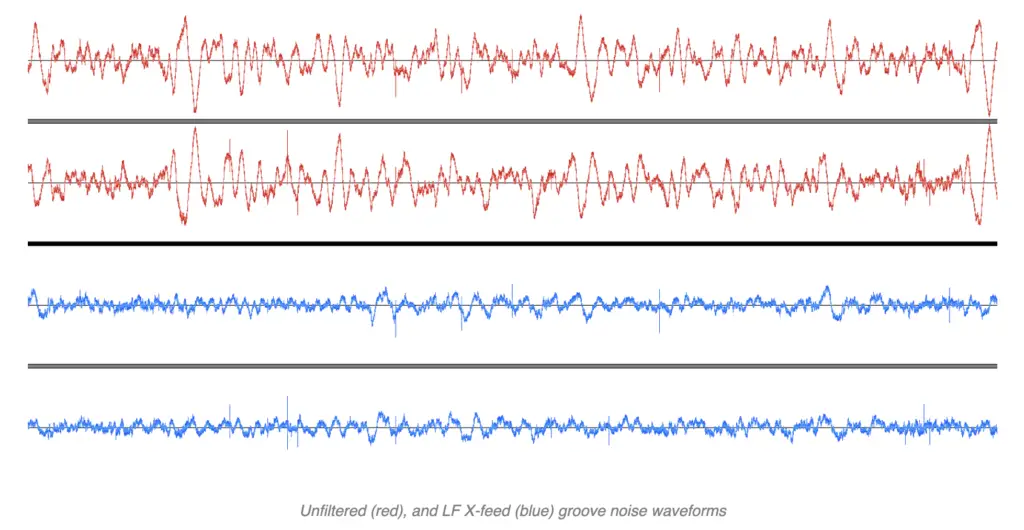
Subsonic Filter
Aside from clouding audio clarifty, excessive subsonic noise can damage bass drivers – not to mention, it also wastes a great deal of amplifier headroom!
The MC Pro has a fixed subsonic filter that appears to attenuate these inaudible frequencies without causing coloration to the frequency curve. The short version of how this is achieved (according to Michael) is by using hand-matched capacitors.
The benefit to you is a subsonic-free listening experience without either a muddy or thin-sounding bass response as a consequence.
Again, this is such an engineer-led product, and I’m only really touching the surface of careful consideration taken while designing this phono preamp.
Those wishing to know more details should check out the MC Pro product page, which has an extensive run-through of every design element, complete with specifications.
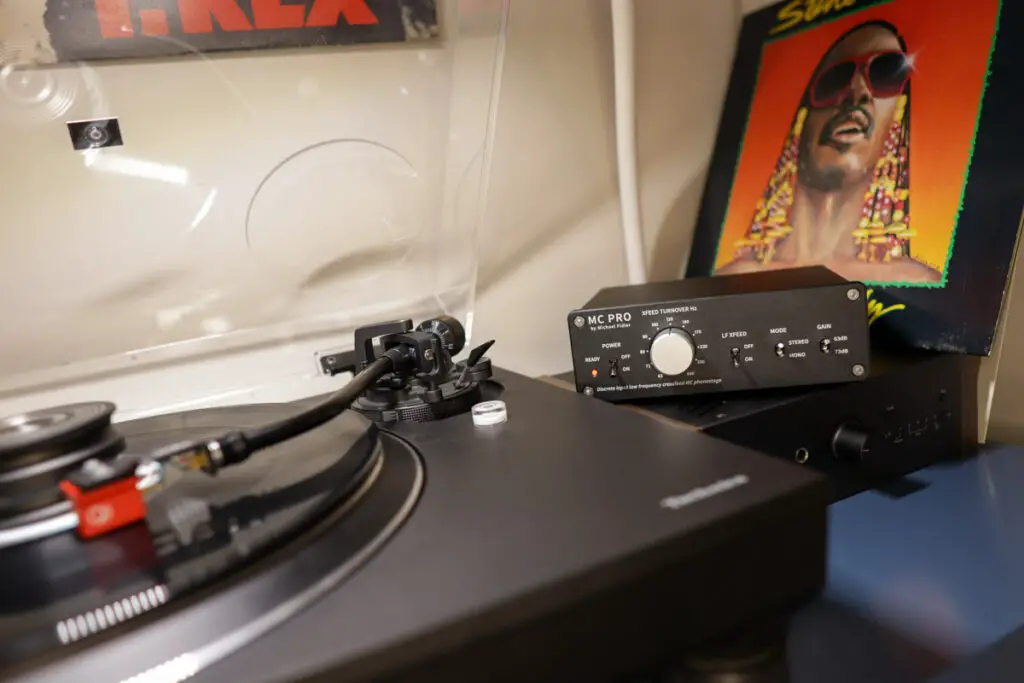
MC PRO Review: The Bottom Line
When all is said and done, the MC Pro is the quietest, most transparent phono preamp I’ve heard. There is no overriding sound signature other than it simply gets out of the way, allowing you to hear the music precisely as it was intended.
If anything, you’re hearing more accurately the sonic signature of your cartridge, which is exactly the sense I got when reviewing the Spartan 15.
The MC Pro is lively, dynamic, and a real treat to the ears. In many of my other phono preamps (and I’ve reviewed quite a few of late!), I’ve used somewhat fluffy language to describe the sound…
But given how transparent this thing sounds, this type of explanation feels inconsequential. Instead, it makes more sense to highlight the MC Pros exceptional light and shade thanks to the inherent lack of self-noise.
This is enhanced further by the low-frequency crossfeed, which only further removes any distracting noise that might obscure the more subtle details and finesse of the very best recordings.
Reverb tails and recording spaces become clearer overall and easier to distinguish. Low frequencies are more evidently refined than the competition I’ve heard, and while some purists argue the toss over whether summing a portion of the low-end to mono should be done at all, the benefit of reduced mechanical and surface noise is undeniable to my ears.
Quiet passages of music benefit the most, but equally, with such incredible headroom, louder passages and very dynamic recordings are allowed to raise the roof in the most remarkable way.
I’ve spent just over a month with the MC Pro now, and I have to say, I will struggle to let this one go. It’s that good!
There are other features I haven’t fully covered in this review, including the immensely useful mono switch (sadly missing from most phono preamps). If you play any amount of older mono records and you don’t own a true mono cartridge, you’ll notice a significant cancellation of surface noise with this feature enabled – just as I did when reviewing the Spartan 15.
The MC Pro deserves a more beautiful housing; that much is undeniable, and I don’t think Michael Fidler himself would refute this. Perhaps as the company continues to grow, this may come in good time. For now, though, his priorities are exactly in the right place.
VIEW PRODUCT






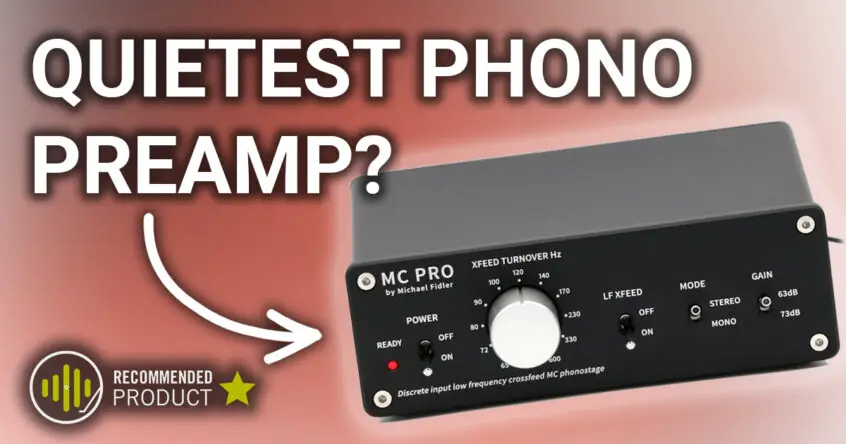


Nice in-depth review, but I am really shocked that you make no mention of MC Impedance Loading???
(Perhaps I missed it?)
Can you provide some details?